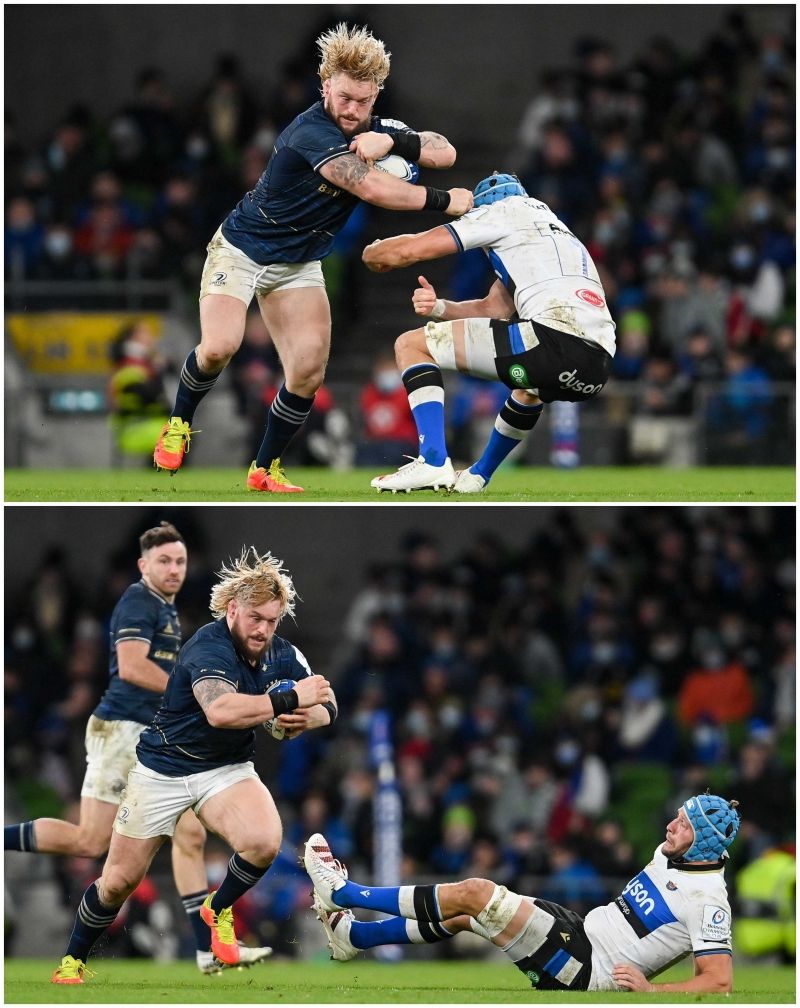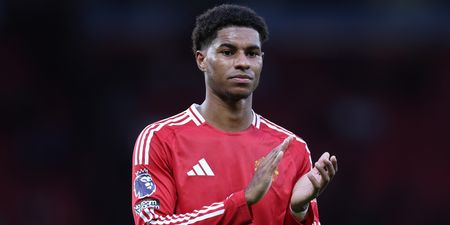The game has evolved, and it is not going back.
In the past two weeks, I have had the opportunity to see two Leinster games in amongst the supporters and see games unfolding from a different perspective.
It is not often that I get to take in games as a rugby supporter and with a cold drink in my hand. That was a past life, almost, before covering these provinces became the day job, and the dream job.
However, a couple of opportunities to get along to some games, and leave the objective journalist hat at home, cropped up in the past couple of weeks. So, at The RDS and the Lansdowne Road, I went along with family members to see Leinster take on Connacht and Bath.
I was expecting a seismic revelation but all that truly dawned on me was this – ‘Jesus, Leinster ARE Ireland. Ireland ARE Leinster’.
The biggest take-away from both matches, though, was how Leinster’s first-choice front row has changed the Irish game completely.
Andrew Porter’s switch from tighthead back to loosehead, and Rónan Kelleher kicking on to become a week-in, week-out baller has offered Leinster and Ireland such a potent attacking dimension. Added to the already world-class Tadhg Furlong, both sides are suddenly different prospect altogether. Add Dan Sheehan to that mix and both teams are a true force to be reckoned with.

Leinster’s front three changing the game
Watching Kelleher last season, and early on in this campaign, I was concerned about his lineout throwing and felt opposition teams could target Leinster and Ireland there for potential turnovers.
With Porter, he is a menace at the breakdown but can be guilty of not getting out when the referee has already issued a warning. After watching both men in recent months, I have accepted that what they bring in terms of positives far out-weighs the negatives.
To Leinster, and Ireland, this front row are now what Trent Alexander-Arnold and Andy Robertson are to Liverpool.
Having grown up a huge football fan, I’ve seen the role of the full-back evolve massive in the past 30 years. The primary job of the full-back was to be damn good at defending and, when possible, support the wingers. Gradually, though, we went from Denis Irwin to Gabriel Heinze to Patrice Evra, each one more and more an attacking force.
Jurgen Klopp took it further, still, with Robertson and Alexander-Arnold. They are huge attacking weapons for Liverpool. If they bomb forward, it is handy having a swift Virgil Van Dijk to cover, or either Jordan Henderson or Fabinho to drop back and fill in.
Robertson and, more so, Alexander-Arnold can still get caught out of position and Liverpool will give up the odd chance or goal [see the Real Madrid away game from last season], but Liverpool have looked at the data and are happy to have their full-backs pressing high up the pitch.
Leinster, taking a big page from the book of the Crusaders and the All Blacks, have settled on the notion – passing forwards make space.
Furlong has already shown a superb passing range, and is a threat with ball-in-hand. Porter and Kelleher [as well as Sheehan] have all been tasked with following the Furlong template, and it is working.
Kelleher is one of the form hookers in world rugby right now. On Saturday, he scored another brilliant try after latching onto the ball just outside the Bath 22:
Credit: BT Sport (via YouTube)Attacking from the front
Since February, for club (mostly) and country, Leinster’s front row forwards have scored 30 tries and come up with almost as many assists [passes or carries right before a try is scored]. Kelleher and Sheehan have 17 tries between them, in that period.
This is the score-sheet effect we are all seeing, but the bigger picture is how props and hookers now MUST be defended. The opposition need to remain on high alert when they get their paws on the ball. Sure, there are still plenty of blunt-force lumps into contact but players are evolving to distribute and bring others around them into the game.
What we may have to cede some ground on is something traditionalists may struggle with. The set-pieces may not always be perfect, but what teams with mobile, attacking front rows are getting in return is often worth the price.
The Kiwis, as they so often do, delivered the blue-print. Leinster have done some rote learning and adapted it to the production line of quality forwards coming in, and through, their academy.
What we are seeing is the game changing before our eyes. Nick Popplewell, Keith Wood and Sean Cronin showed what was possible. The rest are starting to follow, in droves.









































